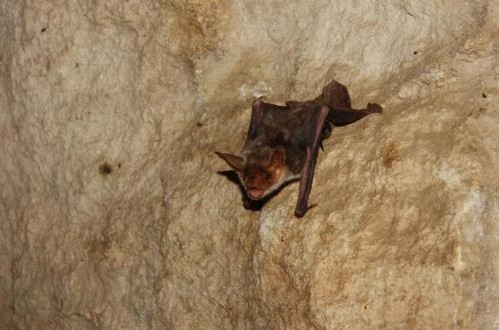Greater mouse-eared bats find their way in the dark by using light polarization patterns in the sky, research has revealed. They are the first mammals known to do so.
The bats take advantage of the way sunlight is scattered in the atmosphere at dusk to calibrate their internal magnetic compasses, according to a study published in the journal Nature Communications. But how bats manage to do this remains a mystery.
Even though bats are known to use echolocation to home in on their prey, this mechanism only works at distances up to a maximum of about 165 feet. For longer distance navigation, bats must use some other sensory input, such as vision.
The pattern of polarized light from the sun is strongest at dusk and dawn, when a strip of polarized light arches over the sky with one end pointing north and the other pointing south.
The researchers decided to test the hypothesis that bats calibrate a magnetic compass with cues from this polarization pattern.
To do this, they conducted experiments with 70 female greater mouse-eared bats by taking them from their home cave and allowing them to observe the sky at sunset from inside experimental boxes.
The boxes were fitted with different light filters to manipulate the sun’s polarization pattern.
Then, when the bats were released from more than 12 miles away, they attempted to head home, according to the Christian Science Monitor. A control group flew in the right direction, but experimental groups flew either 90 degrees to the left or 90 degrees to the right, depending on the type of box filter they had been confined in during sunset.
The scientists concluded that the polarization pattern of the sun provides a more reliable calibration point for the bats than the sun’s position in the sky.
That way, even when the sun is obscured by clouds, polarization can still give accurate information.
In addition, polarization patterns are visible long after the sun has set, when the bats emerge from their caves to hunt.
Agencies/Canadajournal
 Canada Journal – News of the World Articles and videos to bring you the biggest Canadian news stories from across the country every day
Canada Journal – News of the World Articles and videos to bring you the biggest Canadian news stories from across the country every day



